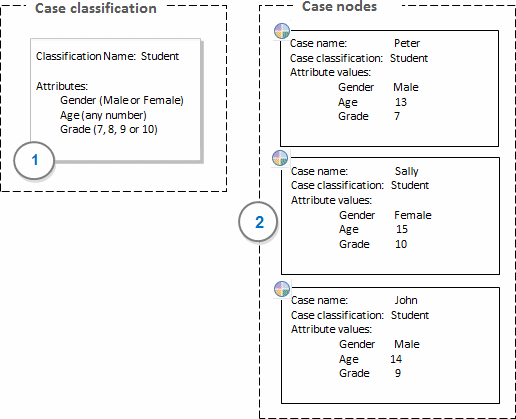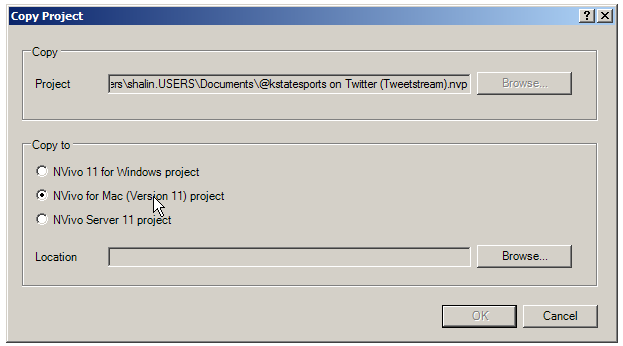It’s easy to get lost in a lot of text-based data. NVivo is qualitative data analysis software that provides structure to text, helping you quickly unlock in. There are three editions of NVivo 11 software: NVivo Starter, NVivo Pro and NVivo Plus. Each edition features a different level of functionality to support a range of projects and research needs. Visit the QSR Website for a detailed comparison of the features available in each edition. Download QSR NVivo 11.4.1.1064 / 11.4.0 macOS for free at ShareAppsCrack.com and many other applications - shareappscrack.com. If you have an NVivo license for NVivo 12, NVivo 11 and NVivo 10, you can download the version you require within the myNVivo portal. On the Download NVivo page, older versions are listed under the heading ‘Download Older Versions of NVivo’. Click the drop down to see all versions available to download. 5 For more information about working with NVivo refer to:. NVivo Help—click the File tab, then click Help and then click NVivo Help. The QSR website (www.qsrinternational.com)—access video tutorials, the QSR forum, FAQs, training.
This feature is available in NVivo Pro and Plus editions. Learn more
A relationship is a special type of node that defines the connection between two project items. You can create relationships in your project and then gather evidence about the relationship from your source material.
If you are using NVivo Plus, you can visualize and analyze relationship connections in sociograms—refer to About social network analysis for more information.
In this topic
Understand relationships
Relationships record statements or hunches you have developed about how items in your project are connected. You might create relationships to show how your research participants are related—for example, Anna 'employs' Ken; or how concepts are related—for example, industrial waste 'impacts' water quality. You could code content at the individual nodes—for example, industrial waste and water quality, as well at the relationship—for example, industrial waste 'impacts' water quality.
Relationships are made up of three parts: 'from', 'to' and the 'type' of relationship. You can create relationships using sources, nodes, cases and sets—and the 'from' and 'to' parts don't have to be the same type of project item.
To record relationships between your project items, you first need to create a relationship that connects them. You choose the project items that are involved in the relationship and select a relationship type. Relationship types indicate the nature of the relationships. You can use the system-created 'Associated' relationship type or create your own relationship type.
When adding a relationship type you can define one of the following directions:
One way (Anna 'employs' Ken)
Associative (Anna 'knows' Ken)
Symmetrical (Anna 'works with' Ken)
Relationships are stored in the Relationships folder under the Nodes group in Navigation View. Relationship types are stored in the Relationship types folder under the Classifications group in Navigation View.
Just like other types of nodes, you can visually present relationships by showing them on Comparison diagrams and Explore diagrams.

Coding at relationships
Like ordinary nodes, you can code content at 'relationships'. As you work through your sources you can code information at relationships that supports or demonstrates the relationship. For example, you can code text that is evidence of marine dumping affecting water quality at the marine dumping 'impacts' water quality relationship. You can then open the relationship node and explore the evidence you have gathered.
NOTE When you create a relationship between two nodes, the coding at individual nodes does not become part of the relationship's coding.
For more information on coding, refer to About coding.
View relationships with charts
Charts provide a way that you can visually represent the sources and attributes coded at a relationship. You can use charts:
- To see which sources provide evidence of a relationship—for example, who are the main survey participants who have mentioned the relationship wetlands protect water quality?
- To view demographic information about people or entities that have referred to a relationship—for example, females aged 50-59 are most likely to express the opinion that fossil fuels cause global warming.
Refer to About charts for more information.
Visualize relationships in sociograms
Sociograms let you visualize and analyze relationships between cases. Refer to About social network analysis for more information.
Related topics
Nvivo 11 License Key
NVivo 11 Windows

NVivo provides backward compatibility enabling users to open and work with projects from previous versions.
In this topic
Compatibility with previous versions of NVivo
NVivo 11 Windows allows users to open and work with projects from previous versions of QSR software: NVivo 10, NVivo 9, NVivo 8, NVivo 7, NVivo 2, NVivo 1, N6 (NUD*IST 6), N5 and N4.
These previous versions can continue to operate on the same computer as NVivo 11.
NVivo provides backward compatibility—if a user with a later version of NVivo attempts to open a project in an earlier format (for example, a user opens an NVivo 10 SP6 project in NVivo 11), the user is prompted to convert the project to the later format. The original project is not modified; instead a converted copy of the project is created.
NVivo does not provide forward compatibility—the user cannot open a project with a later format. For example, if a user wants to open an NVivo 11 for Windows project, they must have NVivo 11 for Windows (or later) installed.
Make sure that team members collaborating in a standalone project or a server project are using the same version (and service pack) of the NVivo software. Projects in NVivo 11 Windows format cannot be opened in NVivo 10. If team members are not using the same service pack, they may not be able to use the same features.
Compatibility with NVivo for Mac
NVivo 11 for Mac projects have a different file format from those created in NVivo 11 for Windows:
NVivo 11 for Windows (.nvp)
NVivo 11 for Mac (.nvpx)
All conversion between formats must be done using NVivo 11 Windows.
Project conversion can take a long time depending on the number of documents and PDFs and the amount of coding. We are working on compatible project file formats in the future that will not require conversion.
Users cannot open anNVivo 11 Windows project (.nvp) in NVivo 11 for Mac software—they need to convert it to the NVivo 11 for Mac format first. They can do this using the 'copy project' feature in NVivo 11 Windows. They can also export selected items to a new NVivo for Mac (Version 11) project.
Users can open an NVivo for Mac (Version 11) project (.nvpx) in NVivo 11 Windows and it will be converted into the NVivo 11 Windows format. Alternatively, they can also import the content from an NVivo for Mac project into an NVivo 11 Windows project.
The Windows-Mac Project Converter is downloaded and installed automatically the first time the user does a project conversion to or from NVivo for Mac format. The download is approximately 200 MB and may take a few minutes depending on the speed of the internet connection. Alternatively, you can:

Download and install the project converter through an unattended command line installation.
Install the project converter from your NVivo 11 Windows USB flash drive – double-click the ExtractConverter.exe file (in the Windows-Mac Project Converter folder).
NVivo for Mac has a subset of the features available in NVivo 11 Windows. If users convert their NVivo 11 for Windows project and access it on the Mac, they may not be able to work with all their project items. For a detailed comparison of the features available on both platforms, refer to the QSR website.
While it is possible work with a project on both Windows and Mac (cross-platform), we recommend that users work with their projects on a single platform. We recommend that users working in teams use the same version of the software (and do not work cross-platform).
For information on cross-platform limitations and issues, refer to Work with your projects on Windows or Mac in the NVivo for Mac Help.
Compatibility with NVivo Server
NVivo Server 11 enables multiple users to access and work on centrally stored NVivo 11 Windows projects. NVivo Server 11 is also capable of hosting NVivo 10 and NVivo 9 projects.
NVivo 11 Windows interoperates with NVivo Server 10. Users withclient software can connect to NVivo Server 10 and can:
create or open NVivo 11 for Windows projects on that server
copy NVivo 11 for Windows project to and from that server
convert an NVivo 10 project on that server to an NVivo 11 for Windows project
All users, who are working together in a shared project, should be using the same version of the NVivo client.
Compatibility with NCapture
NCapture is a free web browser extension that enables users to gather material from the web. Users can collect web pages as well as content from social media sites—for example, Facebook and Twitter.
Each time a user captures a web page with NCapture, a new NCapture file (.nvcx) is created with content and metadata from the web page. Users can import NCapture files into their NVivo 11 for Windows projects.
NCapture is included as part of the installation for NVivo 11 for Windows. You can also download and install NCapture separately.
Nvivo 11 Pro

Nvivo 11 Mac
NCapture is updated regularly to keep pace with changes to web browsers an social media sites. NCapture may also be updated when a new service pack of NVivo 11 for Windows is released. If you upgrade with a service pack of NVivo 11 for Windows, you should also update NCapture at the same time.
Nvivo 11 For Windows
You do not need to have NVivo installed on the computer in order to use NCapture—for example, a user (who does not have NVivo) can use NCapture go gather web content and send the NCapture files (.nvcx) to another user who has NVivo 11 for Windows.